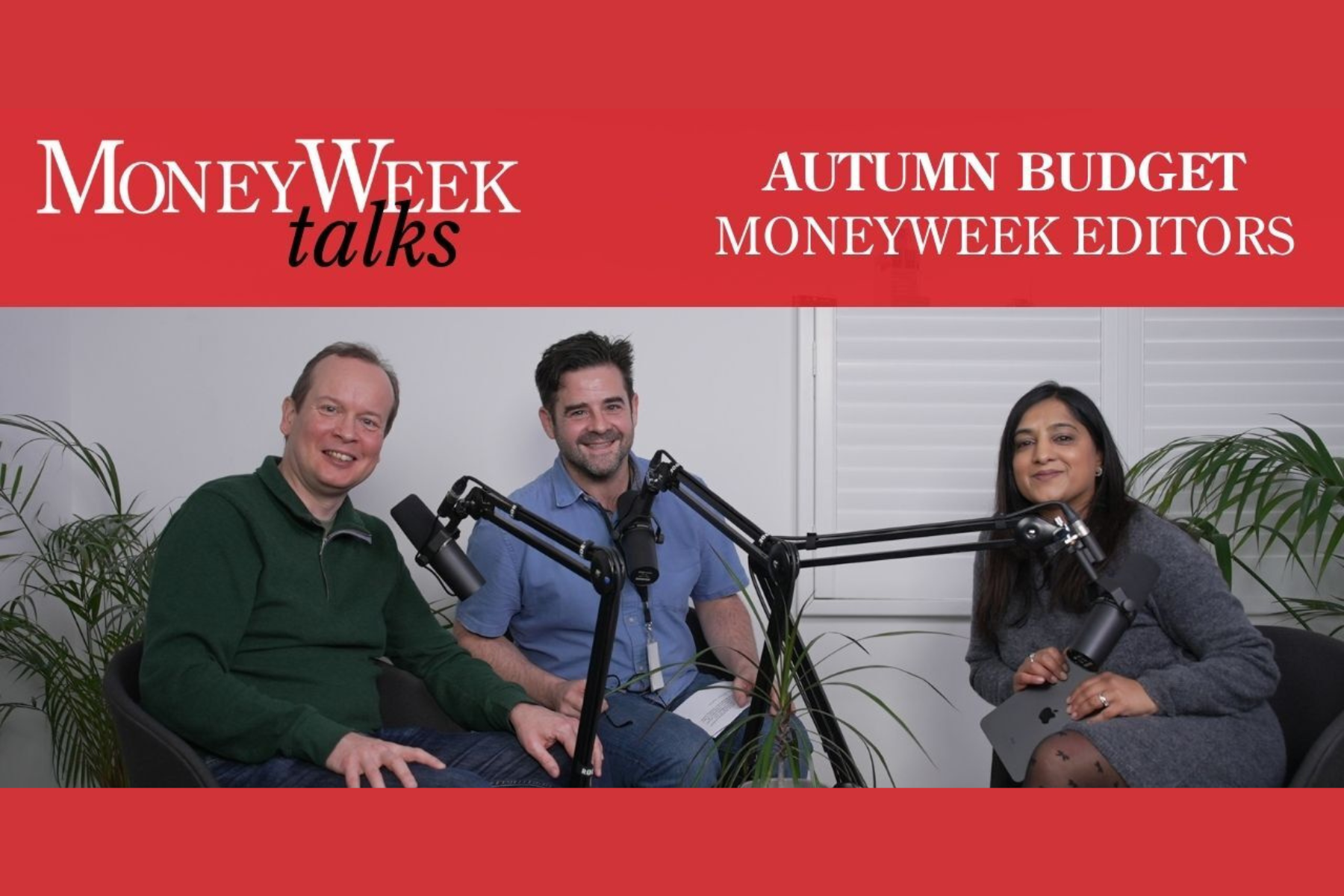Why banks are getting back to basics
Remember when banks lent money using the cash deposited with them? Banking has come a long way since then but, with the credit market turning, is old-fashioned banking about to make a comeback?
Remember when banks lent money using the cash deposited with them?
That's how most people still imagine banking works, even today. The banks hope to profit simply by charging more on their loans than they pay out to cash depositors. The art (or science) comes in choosing only the most credit-worthy borrowers, or adjusting the interest rate charged to higher risk debtors accordingly.
A collateral claim on the borrower's assets would add further protection. But such a simple business safeguarding one person's cash and making a profit by lending it out to somebody else just wasn't enough to turn a profit on the greatest bubble in money ever seen.
MoneyWeek
Subscribe to MoneyWeek today and get your first six magazine issues absolutely FREE

Sign up to Money Morning
Don't miss the latest investment and personal finances news, market analysis, plus money-saving tips with our free twice-daily newsletter
Don't miss the latest investment and personal finances news, market analysis, plus money-saving tips with our free twice-daily newsletter
Indeed, it now looks naive, if not stupid. Far better to lend money and then securitize that debt, selling it to someone else and leaving them to worry about the risk of default. The sale returns to the bank the same sum of cash that it first lent out. And that enables the bank to make a fresh loan once more...before securitizing it...selling it as an asset...and raking back the money yet again...ready for fresh lending...securitization...bond sale...clawback...and lending in turn.
The idea of risk to the bank hardly enters the equation. Judging the risk to those institutions who buying the securitized debt can also be outsourced, as well. Step forward Standard & Poors, Moodys and Fitch with their pro-forma rating applications. Tick the right boxes when creating your next securitized debt product, and the ratings agencies will make selling it a cinch.
'If I buy a 24 carat gold ring,' asks the anonymous London hedge fund manager behind FinTag.com, 'I expect it to be pure 100% gold. If I buy into a triple A-rated bond, I expect the underlying to be triple A too.
'So why are the rules different for Asset Back Securities? The JP Morgan Chase Commercial Mortgage Securities Trust, 2007-LDP11 is made up of commercial property underlying assets based in New York, Florida and California. It consists of 25 tranches of differing quality, yields and risk. The trust has a notional amount of over $5 billion and nine of the tranches, which can be bought as separate notes, have been designated by Moody's and S&P the top grading of Aaa and AAA respectively. This accounts for 86% of the portfolio. The other 15 tranches are less than triple A and mostly of junk status.
'[Yet] the total portfolio has been designated triple A status. This is the equivalent of my gold ring containing 14% tin, but still being sold as 24 carat.'
Catching a nasty rash off the base metals in your wedding ring is one thing. Spotting junk-rated debt in your AAA-rated mortgage bonds is now proving more than itchy.
'We feel terrible in that investors have lost money,' said Greg Barr, a Standard & Poors analyst who helped rate the credit-worthiness of Basis Capital's Yield Fund in Australia, to The Australian newspaper earlier this week.
'We do our best in terms of getting the ratings right,' he went on, practically begging to be sacked by the time he got back to the office. 'This one has turned out differently to what we expected.'
S&P had a five-star rating on the Basis Yield Fund, reviewed and confirmed last November. The fund just told its investors that they lost 13.7% of their money last month alone. 'It is believed to have sunk significantly further since,' says The Australian. And without credit-derivative hedge funds standing ready to buy up securitized debts, let alone mortgage-backed bonds, suddenly the banks are forced back into the business of judging risk for themselves and keeping the debt on their books.
The impact on global asset values from housing to equities, emerging markets to fine art is already proving dramatic. Spending on mergers and acquisitions in the US stock market rose to a record total of $1.1 trillion during the first five months of this year. Globally, a full 78% of all corporate deal-making was paid for in debt, most typically corporate debt sold onto the bond market.
And now?
'Cadbury Schweppes could be forced to delay or even abandon the multi-billion-pound sale of its US drinks arm,' reports The Times in London.
'Chrysler Group became a signpost for the high-yield-debt market's strain,' says the Wall Street Journal, 'as bankers for the ailing auto giant postponed a $12 billion sale of debt to investors as part of a buyout.'
'Concerns are growing that this year's $200bn pipeline of new leveraged loan sales could be hamstrung by credit market conditions and lack of investor appetite,' adds the Financial Times.
'More than 40 companies worldwide reorganized or abandoned bond offerings in the past three weeks,' says Bloomberg. 'The retreat forced banks to take on at least $32 billion of debt they would have otherwise sold.'
The sad tale of Alliance Boot's ailing buy-out puts the case in a neat little package. The giant British pharmacy group was only formed last July from the merger of the two market leaders. It was then bought out by the deputy chairman, Stefano Pessina, and US private equity firm Kohlberg Kravis Roberts at the end of last month.
Following the usual route to taking high-value listed assets off the stock market, KKR and Pessina didn't actually have the £11.1 billion ($22.2 billion) they needed to complete the purchase. Instead, they planned to load Alliance Boots up with debt to pay them for the pleasure of owning it.
Now the credit cycle has turned with a vengeance, however, and so KKR was this week forced to offer higher interest payments on a good chunk of the £9 billion ($18 billion) debt package it still needs to float. The underwriting banks Deutsche Bank, J.P.Morgan and Unicredit have managed to syndicate only a small portion of the outstanding debt they're now owed, leaving £7.25 billion on their own books, awaiting sale once the credit market settles down. Here's hoping it does. Soon.
Step back to look at what this little hiccup in the short-term, and that's $14.5 billion that those banks now can't offer to underwrite new leveraged buy-outs. Until the Alliance Boots debt can be syndicated, it's also $14.5 billion that the underwriters themselves have effectively loaned to KKR. This was never the plan, but it's a lot like the standard banking business that most people, if asked, would say banks are there to provide. It's also a clear consequence of the credit crunch spreading out from the US subprime mortgage sector, led by the collapse of Bear Stearns highly-geared mortgage-derivative hedge funds in June.
With credit and cash liquidity now drying up fast outside the government bond market where buyers assume the risk of default equals zero, of course Treasuries have put in their best weekly performance since last summer, driving the 10-year US bond yield down to 4.77% from a peak above 5.30% only last month.
Nor is gold immune to this apparent 'flight to safety'. Sinking nearly $20 per ounce from its top of earlier this week, gold has been pulled lower by the rush of money exiting all so-called 'risk assets'. Only the largest national governments look a safe bet right now, according to the market at least.
If old-fashioned banking continues to grow, get ready for further falls in equities, corporate bonds, emerging markets, higher-risk currencies and perhaps commodities. If the market suddenly starts questioning the true value of Treasury debt, expect gold prices to turn tail and start moving higher as all other asset classes become certain losers.
Adrian Ash is editor of Gold News and head of research at www.bullionvault.com
Get the latest financial news, insights and expert analysis from our award-winning MoneyWeek team, to help you understand what really matters when it comes to your finances.
Adrian has written all things gold related from if it’s worth buying, what the real price of gold should be and what’s the point of gold for MoneyWeek. He has also written for other leading money titles on his gold expertise including Business Insider, Forbes, City A.M, Yahoo Finance and What Investment Magazine. Now Adrian is head of the research desk at BullionVault, a physical market for gold and silver for private investors online.
-
 How much would it cost you to buy a house in Great Britain's happiest places?
How much would it cost you to buy a house in Great Britain's happiest places?Average asking prices for a property in the happiest place in Britain are below the national average
-
 How the Budget will hurt you: MoneyWeek Talks
How the Budget will hurt you: MoneyWeek TalksPodcast An Autumn budget podcast special episode, featuring MoneyWeek editors Kalpana Fitzpatrick, Andrew van Sickle and Cris Heaton.